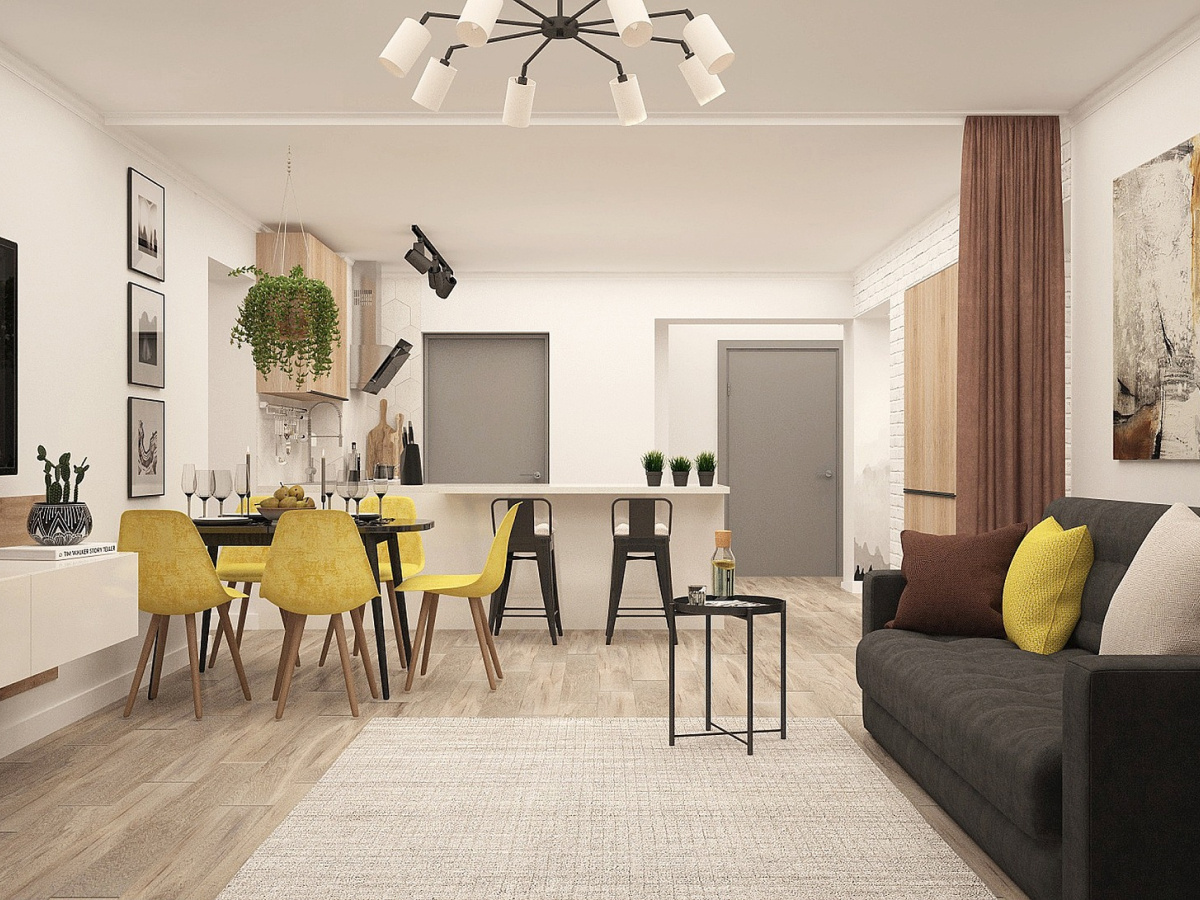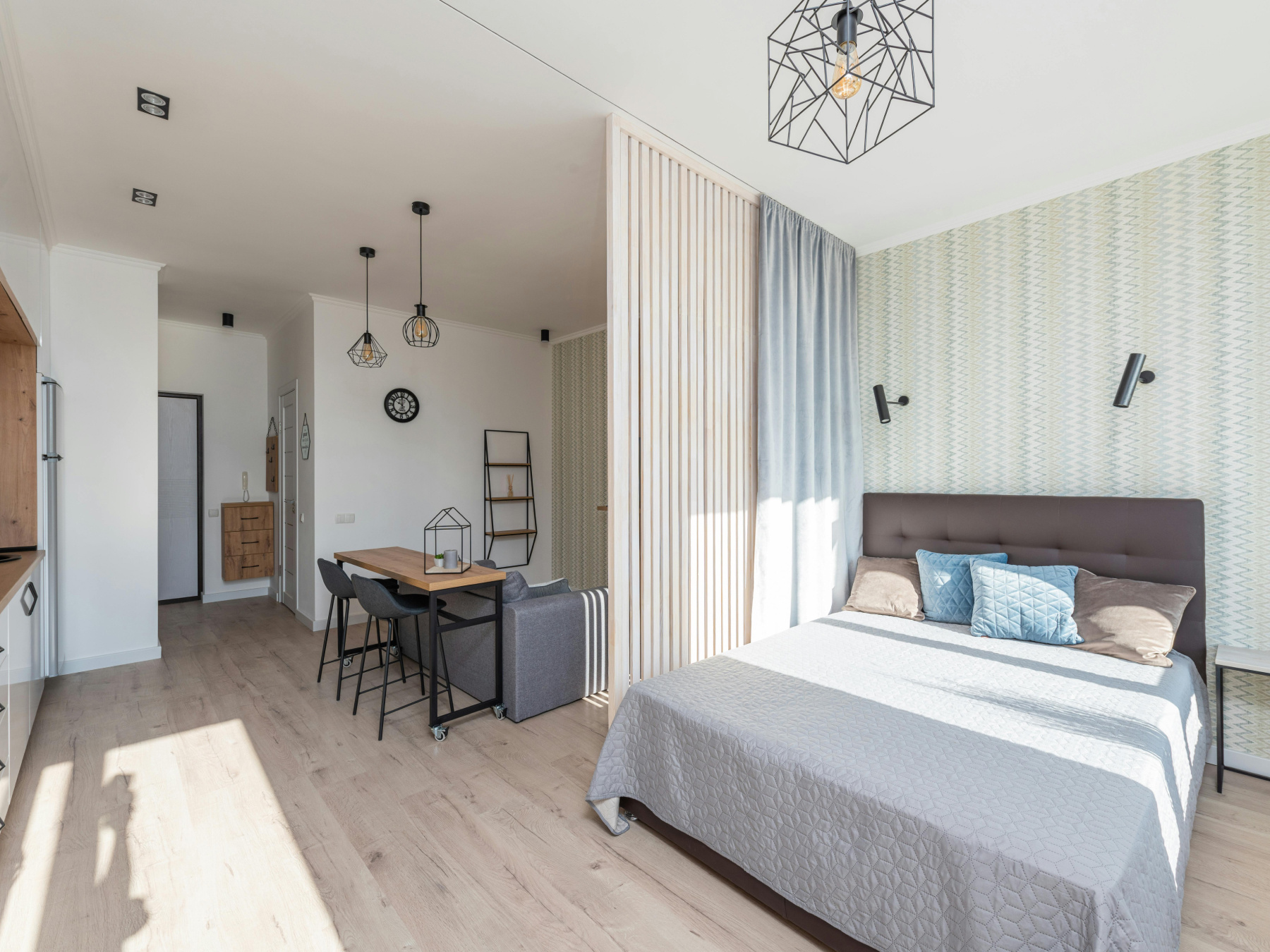Living in a compact home like a small apartment or a garden cottage has many advantages, but it does also have its limitations, especially when it comes to space, and it can be challenging to deal with the clutter which can easily make a small space feel cramped.
It may seem like a challenge, but with thoughtful planning and creativity, it’s possible to transform even the tiniest of homes into a comfortable, efficient, and stylish sanctuary and one of the most effective strategies for maximising small living spaces is to create multifunctional areas.
This approach not only makes the best use of limited square meterage but also enhances the overall liveability of your home.

Why Multifunctional Areas Work in Smaller Spaces
- Optimised Space Utilisation: Multifunctional areas ensure that every inch of your home is put to good use. Instead of having separate rooms for different activities, integrating various functions into a single area allows you to do more with less space.
- Increased Flexibility: Spaces that serve multiple purposes can easily adapt to your changing needs. For instance, a living room that doubles as a guest bedroom or a home office can be quickly reconfigured depending on the situation, making your home more versatile.
- Enhanced Aesthetics and Flow: A well-designed multifunctional space can appear more open and cohesive. By reducing the number of walls and barriers, you create a sense of continuity and flow, which can make a small home feel more spacious and inviting.
- Cost-Effective: Combining multiple functions into one area can save money on furniture and renovations. You won’t need to invest in separate pieces for each function, and you can often find multipurpose furniture that serves several needs at once.

Do's and Don'ts of Creating Multifunctional Areas
Multifunctional areas are a very effective way of properly utilising small spaces, but it’s not quite as simple as putting a sleeper couch in the corner and throwing down a rug or two.
Do's:
- Invest in Multifunctional Furniture: Look for furniture pieces that can serve more than one purpose. A sofa bed, for example, can be a comfortable seating option during the day and a cosy bed at night and an ottoman with storage inside can provide extra seating and a place to store blankets or books.
- Utilise Vertical Space: Take advantage of your walls by installing shelves, hooks, and cabinets. This will free up floor space and keep your belongings organised. Consider a murphy bed that folds up against the wall when not in use.
- Create Defined Zones: Even in a multifunctional space, it’s important to establish distinct areas for different activities. Use rugs, lighting, and furniture arrangement to delineate spaces for dining, working, and relaxing.
- Embrace Flexibility with Movable Furniture: Furniture on wheels, foldable tables, and stackable chairs can be easily moved and stored when not in use. This flexibility allows you to quickly change the layout of your space based on your needs.
- Keep It Clutter-Free: In small spaces, clutter can quickly become overwhelming so keep your multifunctional areas tidy by regularly decluttering and using storage solutions to keep items out of sight when not in use.

Don'ts:
- Overcrowd the Space: Avoid the temptation to fill every inch of your home with furniture and decor. Negative space is crucial in small areas as it prevents the room from feeling cramped. Choose fewer, high-quality pieces that serve multiple purposes.
- Ignore Lighting: Proper lighting is essential in making a small space feel larger and more functional. Don’t rely solely on overhead lighting; incorporate a mix of task, ambient, and accent lighting to create a well-lit and welcoming environment.
- Forget About Scale: Scale is key when furnishing a small space. Large, bulky furniture can overwhelm a room so instead, choose pieces that are appropriately sized for your space. Opt for sleek, low-profile furniture that maintains a sense of openness.
- Neglect Personal Style: Just because you’re working with a small space doesn’t mean you have to compromise on style. Infuse your multifunctional areas with your personal taste through colours, textures, and decor that reflect your personality.
- Compromise on Comfort: Functionality should never come at the expense of comfort. Ensure that your furniture, especially pieces that serve multiple purposes, are comfortable and practical. After all, your home should be a place where you feel at ease.
Maximising small living spaces by creating multifunctional areas is all about smart planning and creativity and by investing in versatile furniture, utilising vertical space, and keeping the space clutter-free, you can create a home that is not only functional but also stylish and comfortable.
Remember to define zones, pay attention to lighting and scale, and most importantly, infuse your personal style into every corner. With these strategies, your small home can become a well-organised and beautiful space that perfectly suits your lifestyle.



Comments